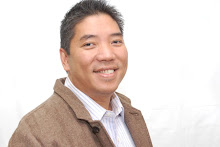By Ambeth Ocampo
Philippine Daily Inquirer
First Posted 02:29:00 10/24/2008
MANILA, Philippines—When Juan Luna’s second child, a daughter, was born, he asked his friend Jose Rizal to be one of the godfathers. Asked to propose a name for the infant, Rizal replied that it would be appropriate to call her Maria de la Paz, in honor of the Blessed Virgin and of course the mother Paz (whose nickname was “Chiching”). Perhaps every relative or godparent who had a say in the naming of the child was accommodated because her full baptismal name was Maria de la Paz Blanca Laureana Herminigilda Luna y Pardo de Tavera. The poor child must have had difficulty writing her entire name on quiz papers and so she was called “Bibi” (I think that’s their version of “Baby”) for short. (Reading the wedding and baptismal notices in our parish reveals that complicated compound names are making a comeback.)
My own unfortunate experience is to be named after my paternal grandmother and my father. My mother always got a kick out of my baptismal name, not knowing how much I hated it and that I never used it. Since I am publicly known under my pen name “Ambeth” (guess where that came from), I’m seriously considering going to court to have my name changed. The only problem is my superstitious belief that St. Peter won’t find my nickname in his register when I turn up at the gates of Heaven, and if I go to the hot place where all the fun people are, it might be better not to be in the devil’s books either.
Nobody believes me when I tell them how a Mass card created a stir during my grandfather’s wake. In true Kapampangan fashion, my overweight aunts were all in black and wailed every time someone approached the coffin and asked for yet another narration of my grandfather’s long illness and peaceful death. Late one afternoon instead of playing mahjong, my aunts decided to open and list down all the Mass cards and wreaths received. An aunt shrieked and started to laugh. The Mass card was passed and was met with laughter every time. When it reached me, I saw why: It had been sent by a certain Circumcision Garcia. She was a contemporary of my grandfather and was known by her nickname, “Apung Tuli.”
Obviously, her unimaginative parents picked her name from a Catholic calendar. You still see these in kitchens (it is often in blue and red and contains the phases of the moon). On each date you will find two names of Catholic saints whose feasts are celebrated on that day. The names are often in the Spanish form and can be made feminine or masculine by changing the last letter, hence: Mario/Maria; Jose/Josefa; Jesus/Jesusa; Dionisio/Dionisia; Gregorio/Gregoria and so on. You will also notice some obscure and wonderful names like Walburga, Epictetus, Expedita and Gorgonio.
“Apung Tuli” was born on Jan. 1, which was not marked as New Year’s Day in the old Church calendar but commemorated as the Feast of the Circumcision of our Lord. One old abbot claimed he used to receive every New Year’s Day from a convent of nuns a greeting card that said, “Happy Circumcision Day!” Of course, in our more politically correct and gender-sensitive day, the Feast of the Circumcision has been changed to the Solemnity of Mary Mother of God.
Can you imagine all the fun and hilarity that these calendars can give us? They also make us rethink some names that are not really names: Asuncion (Feast of the Assumption, Aug. 15); Concepcion (Feast of the Immaculate Conception, Dec. 8); Dolores (Our Lady of Sorrows); Nieves (Our Lady of the Snows). Guadalupe and Lourdes are place names, the sites of Marian apparitions.
If you find the kitchen calendar too limiting, you can get names from TV, movies, radio, even the Internet. In bookstores, you can find pocket-sized books that provide “5,000 names for baby.” If you are into Filipiniana, you can understand why some people are called Rizal or Mabini or Luzviminda (Luzon, Visayas, Mindanao), Filamer (Filipino-American) or Marcial (martial law) or even Edsa. There are political figures with quaint names like Jejomar Binay (Jesus, Jose and Maria, which tells us why old people used to exclaim, “Susmariosep!”) or Heherson Alvarez (He, Her and Son).
Such can be analyzed from real names, so why bother with pseudonyms?
But to end this series, here are a few more from the University of the Philippines’ list of pseudonyms, with my own additions: Nick Joaquin signed some of his works “Quijano de Manila.” Jose Garcia Villa was “Doveglion” or signed his first name in Russian characters as “Xoce.” The most popular National Artist for the Visual Arts, Benedicto Cabrera, is simply “Bencab,” and some stupid folks don’t take the trouble to check and simply proceed to print his name in promotional literature as “Benjamin” Cabrera.
I don’t know who Julio Blanca is and why he chose to become “El Diablo Negro” (black devil), in contrast to Carlos Omana who was “El Diablo Rojo” (red devil as in the Tabasco sauce).
Some took names from nature: Ariston Villanueva took the flower “Kampupot” while the revolutionary Mariano Trias was “Labong” and Briccio Pantas “Bungahan.” I forgot who it was in Philippine history who chose the name “Platano” (banana).
If one is curious one can find delight in simple things like names. If you are a constipated academic, you squeeze the life from learning by focusing on theoretical frameworks and other boring stuff.
* * *
Comments are welcome at aocampo@ateneo.edu.
Monday, October 27, 2008
Subscribe to:
Post Comments (Atom)

No comments:
Post a Comment